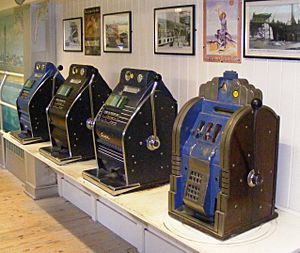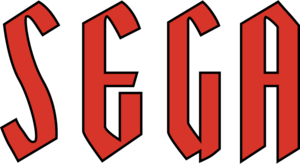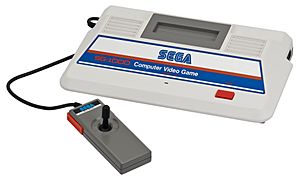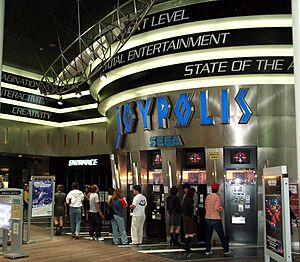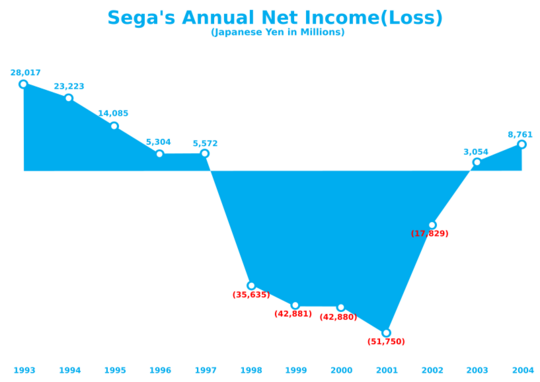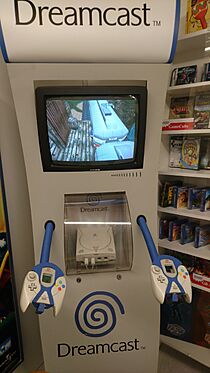Sega facts for kids
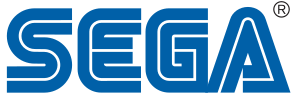
Logo used since 1982
|
|
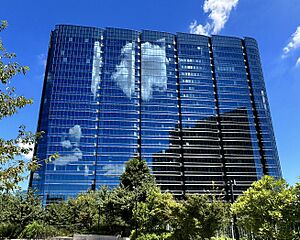
Headquarters in Shinagawa, Tokyo
|
|
|
Native name
|
株式会社セガ
|
|---|---|
|
Romanized name
|
Kabushiki-gaisha Sega |
|
Formerly
|
|
| Subsidiary | |
| Industry | Video games |
| Predecessor | Service Games of Japan |
| Founded | June 3, 1960 |
| Founders |
|
| Headquarters | Nishi-Shinagawa,
,
Japan
|
|
Area served
|
Worldwide |
|
Key people
|
|
| Products |
|
| Revenue | |
|
Operating income
|
|
|
Number of employees
|
2,792 (March 31, 2025) |
| Parent |
|
| Divisions | List of development studios |
| Subsidiaries |
|
Sega Corporation (say-gah) is a Japanese video game company based in Tokyo. It is part of Sega Sammy Holdings. Sega creates many popular game series for arcades and consoles. Some of its most famous games include Sonic the Hedgehog, Angry Birds, Phantasy Star, Puyo Puyo, Super Monkey Ball, Total War, Virtua Fighter, Megami Tensei, Sakura Wars, Persona, The House of the Dead, and Yakuza. From 1983 to 2001, Sega also made its own game consoles.
Sega was started by Martin Bromley and Richard Stewart in Hawaii on June 3, 1960. It was first called Nihon Goraku Bussan. In 1965, it became Sega Enterprises, Ltd., after buying another company that imported coin-operated games. Sega made its first coin-operated game, Periscope, in 1966. In the early 1980s, Sega began making video game consoles like the SG-1000 and Master System. However, it faced tough competition from companies like Nintendo. In 1984, Sega's leaders, David Rosen and Hayao Nakayama, bought the company with help from CSK Corporation.
In 1988, Sega released the Mega Drive, also known as the Genesis in North America. The Genesis became very popular overseas, especially after Sonic the Hedgehog was released in 1991. For a short time, it even sold more than its main competitor, the Super Nintendo Entertainment System, in the US. After some consoles like the 32X, Saturn, and Dreamcast did not sell well, Sega stopped making consoles in 2001. It then focused on making games for other companies' systems. In 2004, Sega was bought by Sammy Corporation. In 2015, Sega Holdings Co., Ltd. was formed, and Sega Corporation was renamed Sega Games Co., Ltd. Its arcade part became Sega Interactive. In 2020, Sega Games and Sega Interactive joined back together to become Sega Corporation.
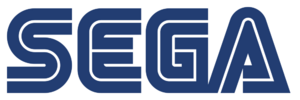
Logo used since 1986
|
|
| Subsidiary | |
| Industry | Video games |
| Founded | March 1986 |
| Headquarters | 140 Progress, Suite 100,
,
United States
|
|
Number of employees
|
425 ~ 430 |
| Parent |
|
Sega has offices around the world, including Sega of America in Irvine, California, and Sega Europe in London. Its game development teams include Ryu Ga Gotoku Studio and Sonic Team. Sega also owns other studios like Atlus, Creative Assembly, Sports Interactive, Sega Hardlight, Two Point Studios, and Rovio Entertainment. Sega is known for making many arcade games, and its mascot, Sonic, is famous worldwide. Sega is recognized for its video game consoles, creativity, and new ideas.
Sega is the entertainment part of Sega Sammy Holdings. It also owns Sega Fave, which makes toys and amusement machines. Sega Fave includes Sega's arcade development and manufacturing teams. Sega also owns two animation studios: TMS Entertainment, which makes anime, and Marza Animation Planet, which specializes in computer-generated (CG) animation.
Contents
- Sega's Story
- Early Days and Arcade Games (1940–1982)
- Entering the Console Market (1982–1989)
- Genesis, Sonic, and Big Success (1989–1994)
- 32X, Saturn, and Changing Times (1994–1998)
- Dreamcast and Becoming a Software Company (1998–2001)
- Sammy Takes Over and Business Grows (2003–2015)
- Sega Games and Sega Interactive (2015–2020)
- Recent History (2020–Present)
- How Sega is Organized
- Sega's Impact
- More About Sega
- See also
Sega's Story
Early Days and Arcade Games (1940–1982)
In May 1940, American businessmen Martin Bromley, Irving Bromberg, and James Humpert started Standard Games in Honolulu, Hawaii. They wanted to provide coin-operated amusement machines, like slot machines, to military bases. After World War II, they sold Standard Games and started Service Games in 1946.
In 1952, the US government made slot machines illegal in its territories. So, Bromley sent Richard Stewart and Ray LeMaire to Tokyo to start Service Games of Japan. This company provided slot machines to US bases in Japan. The name Sega, short for Service Games, was first used in 1954 on a slot machine called the Diamond Star.
Service Games of Japan closed in 1960. On June 3, Bromley started two new companies, Nihon Goraku Bussan and Nihon Kikai Seizō, to take over the business. These companies bought all of Service Games of Japan's assets. Kikai Seizō, known as Sega, Inc., focused on making slot machines. Goraku Bussan, known as Utamatic, Inc., distributed and operated coin-operated machines like jukeboxes. The companies merged in 1964, keeping the Nihon Goraku Bussan name.
Around the same time, David Rosen, an American officer in Japan, started a photo booth business in Tokyo in 1954. This became Rosen Enterprises, which began importing coin-operated games in 1957. In 1965, Nihon Goraku Bussan bought Rosen Enterprises to form Sega Enterprises, Ltd. Rosen became the CEO. Sega then focused on amusement machines instead of slot machines.
Sega started making its own games because imported machines needed a lot of repairs. The first arcade game Sega made was Periscope, a submarine game released in the late 1960s. It had cool lights and sounds and was very popular in Japan. It was also sent to Europe and the United States. Sega then made many more games each year.
In 1969, Sega was sold to an American company called Gulf and Western Industries, but Rosen stayed as CEO. In 1973, Sega released Pong-Tron, its first video game. Sega did very well during the arcade video game boom of the late 1970s. Its earnings grew to over $100 million by 1979. In the early 1980s, Sega was one of the top arcade game makers in the US. In 1979, Head On came out, which inspired games like Pac-Man. In 1981, Sega licensed Frogger, which was its most successful game at the time. In 1982, Sega released Zaxxon, the first game with isometric graphics.
Entering the Console Market (1982–1989)
The arcade business slowed down in 1982. So, Gulf and Western sold Sega's North American arcade part in 1983. Sega Enterprises, Ltd. president Hayao Nakayama wanted the company to make home game consoles. This led to Sega creating a computer, the SC-3000. When Sega learned that Nintendo was making a game-only console, the Famicom, Sega also made its first home video game system, the SG-1000. The SG-1000 sold well, but Nintendo's Famicom sold even more. This was partly because Nintendo worked with many other game developers, while Sega was careful about working with companies it competed with in arcades.
In 1984, Nakayama and Rosen bought Sega's Japanese part with money from CSK Corporation. Isao Okawa, head of CSK, became chairman, and Nakayama became CEO.
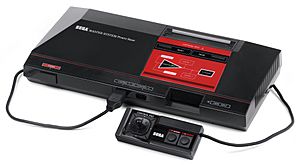
In 1985, Sega started working on the Mark III, a new version of the SG-1000. For North America, Sega renamed the Mark III to the Master System. It was released in Japan in October 1985. Even though it was more powerful than the Famicom, it didn't sell well at first. Nintendo required game developers not to put their Famicom games on other consoles. So, Sega made its own games and got rights to bring games from other developers to its system. Sega partnered with Tonka, a toy company, to help sell the Master System in North America. However, Tonka's marketing was not very good, and the Master System didn't sell well there. It sold between 1.5 million and 2 million units in North America.
The Master System was very successful in Europe, selling as well as the NES. By 1993, 6.25 million Master Systems were being used in Europe. It also continued to be popular in Brazil, where Sega's partner, Tectoy, still releases new versions. By 2016, 8 million Master Systems had been sold in Brazil.
In 1984, Sega opened its European arcade division. In 1985, it returned to the North American arcade market. The game Hang-On (1985) was very popular. The UFO Catcher, a claw machine, was introduced in 1985 and became very common in Japan. In 1986, Sega of America was created to manage Sega's products in North America. Out Run, released in 1986, became Sega's best-selling arcade game of the 1980s. These games helped the arcade market recover and created new types of video games.
Genesis, Sonic, and Big Success (1989–1994)
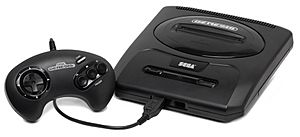
By the late 1980s, Sega was a well-known game brand. In arcades, Sega made many different types of games, like racing games and side-scrollers. Sega released the Mega Drive in Japan on October 29, 1988. Its launch was overshadowed by Nintendo's Super Mario Bros. 3. Sega sold 400,000 units in the first year.
The Mega Drive struggled against the Famicom in Japan. For the North American launch, the console was renamed Genesis. Sega of America handled the launch. The Genesis was released in New York City and Los Angeles on August 14, 1989. The European version of the Mega Drive came out in September 1990.
Michael Katz, the new president of Sega of America, had a plan to boost sales. He launched a marketing campaign to challenge Nintendo, saying "Genesis does what Nintendon't." He also created games with famous people, like Michael Jackson's Moonwalker and Joe Montana Football. Still, Sega had trouble competing with Nintendo. Sega of America sold only 500,000 Genesis units in its first year.

After the Genesis launched, Sega wanted a new main game series to compete with Nintendo's Mario. Their new character, Sonic the Hedgehog, became one of the best-selling video game franchises ever. Sonic the Hedgehog started with a fast-moving character rolling in a ball. Sonic's color matched Sega's blue logo.
Nakayama hired Tom Kalinske as CEO of Sega of America in 1990. Kalinske had a plan: lower the Genesis price, make games for the American market, increase advertising, and replace the bundled game Altered Beast with Sonic the Hedgehog. The Japanese leaders didn't like the plan, but Nakayama approved it.
Because of Sonic the Hedgehog, the Genesis sold almost twice as many units as the Super Nintendo Entertainment System (SNES) in the US during the 1991 holiday season. By January 1992, Sega controlled 65 percent of the 16-bit console market. Sega outsold Nintendo for four Christmas seasons in a row.
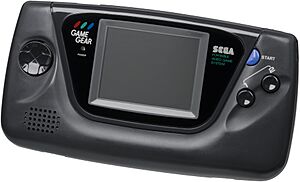
In 1990, Sega launched the Game Gear, a handheld console, to compete with Nintendo's Game Boy. The Game Gear was a portable Master System with a color screen. However, it had short battery life and not many original games. It sold about 11 million units, but did not beat the Game Boy. Sega also launched the Mega-CD in Japan in 1991, which used CD-ROMs. It was renamed the Sega CD in North America. The Mega-CD did not sell as well as expected.
In the early 1990s, Sega continued to do well in arcades. In 1992 and 1993, the Sega Model 1 arcade system showed off games like Virtua Racing and Virtua Fighter. Virtua Fighter was the first 3D fighting game. These games helped make 3D graphics popular. Sega also opened many family-friendly arcades called Sega World in Japan. In 1993, large entertainment centers like Sega VirtuaLand opened overseas.
In 1993, there was a lot of talk about mature content in video games like Night Trap and Mortal Kombat. Sega created the first video game rating system in the United States, the Videogame Rating Council (VRC). After government hearings, Sega helped form the Entertainment Software Rating Board (ESRB), which is still used today.
32X, Saturn, and Changing Times (1994–1998)
Sega started working on the Sega Saturn, the Genesis's successor, more than two years before showing it in 1994. Sega's leader, Nakayama, was worried about the Atari Jaguar coming out in 1994. So, he decided to release another console by the end of 1994. Sega developed the 32X, an add-on for the Genesis. It was cheaper than the Saturn and played Genesis games. The 32X was released in North America in November 1994. After the holidays, people quickly lost interest in the 32X.
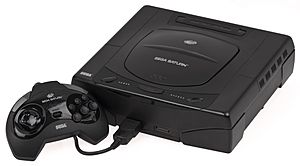
Sega released the Saturn in Japan on November 22, 1994. Virtua Fighter, a popular arcade game, sold almost as many copies as the Saturn console itself. Sega's first 200,000 Saturn units sold out on the first day in Japan. It was more popular than the PlayStation in Japan at first. In May 1995, Sega of America CEO Tom Kalinske announced that the Saturn would be released in the US on September 2, 1995. Sega wanted to launch early to get an advantage over the PlayStation. However, this surprise launch upset some retailers who were not included.
The Saturn also launched in Europe before its announced North American date, on July 8, 1995. Within two days of the PlayStation's American launch on September 9, 1995, the PlayStation sold more units than the Saturn. The Saturn's high price, surprise launch, and difficulty with 3D graphics hurt its sales. Sega also didn't realize how popular the Genesis still was.
Shoichiro Irimajiri became chairman and CEO of Sega of America in July 1996. Kalinske left Sega. Bernie Stolar, a former Sony executive, became Sega of America's executive vice president. Stolar didn't think the Saturn's hardware was well designed. He focused on the quality of its games but also tried to limit the release of some Japanese games he felt wouldn't do well in North America.
Sega worked with GE to create the Sega Model 2 arcade system board. This led to successful arcade games like Daytona USA (1994), Virtua Cop, Sega Rally Championship, and Virtua Fighter 2. Virtua Fighter and Virtua Fighter 2 became Sega's best-selling arcade games ever.
Starting in 1994, Sega opened indoor theme parks in Japan called Joypolis. Sega also partnered with Atlus in 1995 to launch Print Club (purikura), an arcade photo sticker machine. Purikura became very popular in East Asia and helped start modern selfie culture. By 1997, about 47,000 Purikura machines had been sold.
In January 1997, Sega planned to merge with the Japanese toy maker Bandai. This merger was called off in May due to opposition from Bandai's executives. Because of Sega's money problems, Nakayama resigned as Sega president in January 1998. Stolar became CEO and president of Sega of America.
After the Nintendo 64 launched in the US in 1996, Saturn sales dropped sharply. The PlayStation sold three times as many units as the Saturn in the US in 1997. Sega had its first financial loss since 1988 in the fiscal year ending March 1998. Irimajiri blamed this on the failure to move from the Genesis to the Saturn in North America. Sega stopped making the Saturn in North America to prepare for its next console, the Dreamcast. The Saturn sold 9.26 million units worldwide and is seen as a commercial failure in many parts of the world.
Dreamcast and Becoming a Software Company (1998–2001)
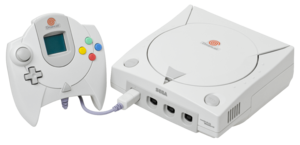
Sega was hopeful about its new system, the Dreamcast. Sonic Adventure, the first big 3D Sonic the Hedgehog game, was a Dreamcast launch game. Sega also announced its New Arcade Operation Machine Idea (NAOMI) arcade system board, which shared technology with the Dreamcast. This allowed arcade games to be easily brought to the console.
The Dreamcast launched in Japan on November 27, 1998. All 150,000 consoles sold out on the first day. However, Sega couldn't make enough consoles due to manufacturing problems. Sega had another big financial loss in the fiscal year ending March 1999. Before the Western launch, Sega lowered the Dreamcast's price in Japan to boost sales.
The Dreamcast launched in North America on September 9, 1999, with 18 games. Sega set a record by selling over 225,132 Dreamcast units in 24 hours. Within two weeks, US sales were over 500,000. By Christmas, Sega had 31 percent of the US video game market. By November 4, Sega had sold over a million Dreamcast units. The Dreamcast launched in Europe on October 14, 1999.
Even though the Dreamcast was successful, Sony's PlayStation still had 60 percent of the market in North America by the end of 1999. In March 1999, Sony announced the PlayStation 2. Nintendo and Microsoft also announced their next consoles. Dreamcast sales in the US started to drop in January 2000. Sega had another large financial loss in the fiscal year ending March 2000. This was Sega's third year in a row with losses.
Peter Moore, a Sega of America executive, said the Dreamcast needed to sell 5 million units in the US by the end of 2000 to survive. Sega only sold about 3 million. Lowering prices and offering cash back also caused more financial losses. In March 2001, Sega had a net loss of $417.5 million. The PlayStation 2's launch had shortages, but this didn't help the Dreamcast much. Eventually, Sony and Nintendo had most of the US video game market, while Sega had only 15 percent.
Isao Okawa, the head of CSK, became president of Sega on May 22, 2000. Okawa believed Sega should stop making consoles. Other people, like Sega co-founder David Rosen, agreed. In a meeting in September 2000, Moore and another Sega executive suggested Sega stop making consoles. The studio heads walked out. Sega officially changed its name from Sega Enterprises, Ltd. to Sega Corporation on November 1, 2000.
On January 23, 2001, a Japanese newspaper reported that Sega would stop making the Dreamcast and create games for other systems. Sega confirmed it was thinking about making games for the PlayStation 2 and Game Boy Advance. On January 31, 2001, Sega announced it would stop making the Dreamcast after March 31. It would become a "platform-agnostic" game developer, meaning it would make games for any console. Sega also lowered the Dreamcast price to sell off its remaining stock.
Okawa, who had loaned Sega $500 million in 1999, passed away on March 16, 2001. Before he died, he forgave Sega's debts to him and returned his Sega and CSK stock, which helped the company survive. He had tried to sell Sega to Microsoft, but Microsoft decided not to buy it. As part of the changes, nearly one-third of Sega's Tokyo workers were laid off in 2001. Sega had net losses for five years in a row.
After Okawa's death, Hideki Sato became president. In 2003, Sega started talks with Sammy Corporation, a company that makes pachinko machines, and Namco. Sega announced it would merge with Sammy, but then also talked with Namco. This upset Sammy. In the end, the merger with Sammy went through.
Sammy Takes Over and Business Grows (2003–2015)
In August 2003, Sammy bought 22.4 percent of Sega's shares, making Sammy Sega's biggest shareholder. In 2004, Sega Sammy Holdings, a big entertainment company, was created. Sega and Sammy became parts of this new company, but they still ran their own businesses. Sammy bought the rest of Sega, completing the takeover. Sega Sammy Holdings was divided into four parts: Consumer Business (video games), Amusement Machine Business (arcade games), Amusement Center Business (Sega's theme parks and arcades), and Pachislot and Pachinko Business (Sammy's business).
In 2005, Sega took full ownership of the GameWorks arcade chain. In 2009, Sega Republic, an indoor theme park, opened in Dubai. Sega slowly reduced its number of arcades from 450 in 2005 to about 200 in 2015. Arcade machine sales made more money than Sega's console, mobile, and PC games until 2014.
To grow in Western markets, Sega announced new leaders for Sega of America and Sega Europe in 2005. Sega sold Visual Concepts and bought Creative Assembly, known for its Total War games. In 2006, Sega Europe bought Sports Interactive, known for its Football Manager games. Sega did well in Japan with the Yakuza, Phantasy Star, and Hatsune Miku: Project DIVA series. Sega also started providing 3D images for Hatsune Miku holographic concerts in 2010.
In 2013, Index Corporation was bought by Sega Sammy. Index's game parts were renamed Atlus, which became a part of Sega. Atlus is known for the Persona and Megami Tensei series. The Sonic the Hedgehog games had made over $5 billion in sales by 2014.
In the mobile game market, Sega released its first app, Super Monkey Ball, for iOS in 2008. Because sales of physical games were declining, Sega laid off workers and closed five offices in Europe and Australia in 2012. This was to focus on digital games for computers and mobile devices. Sega also bought mobile game studios like Hardlight and Two Point Studios.
To make things simpler, Sega created separate companies for each of its businesses. In 2012, Sega Networks was created for mobile games. Sega Entertainment was created for Sega's amusement centers. In January 2015, Sega of America moved to Atlus USA's headquarters in Irvine, California. From 2005 to 2015, Sega's profits generally improved, but it still had losses in some years.
Sega Games and Sega Interactive (2015–2020)
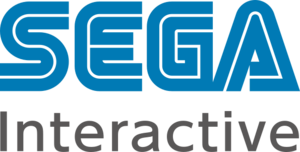 |
|
|
Native name
|
株式会社セガ・インタラクティブ
|
|---|---|
|
Romanized name
|
Kabushiki-gaisha Sega Intarakutibu |
| Subsidiary | |
| Fate | Merged with Sega Games |
| Founded | April 1, 2015 |
| Defunct | March 31, 2020 |
| Headquarters | Nishi-Shinagawa,
Shinagawa, Tokyo
,
Japan
|
| Products | Arcade games Arcade systems |
| Divisions | Sega AM1 Sega AM2 |
| Subsidiaries | Sega Logistics Services Sega Amusements International |
In April 2015, Sega Corporation was reorganized into Sega Group. Haruki Satomi became president and CEO. Sega Corporation was renamed Sega Games Co., Ltd. and handled home video games. Sega Interactive Co., Ltd. was created for the arcade business. Sega Networks merged with Sega Games in 2015. In 2017, most of Sega's theme park business was sold to China Animations Character Co., and it was renamed CA Sega Joypolis.
In April 2017, Sega Sammy Holdings announced it would move its main offices to Shinagawa, Tokyo by January 2018. This brought together many Sega and Sammy companies in one place. Sega's old headquarters in Ōta was sold in 2019.
In 2018, Sega reported good sales from games like Yakuza 6 and Persona 5, thanks to Atlus USA's work in bringing them to Western audiences.
Even with more console game sales, profits fell in 2018. This was mainly due to the digital games market, including mobile games and Phantasy Star Online 2. Sega decided to focus on its existing popular games and on selling physical games overseas. Projects in development included a new Yakuza game, the Sonic the Hedgehog movie, and the Sega Genesis Mini. In May 2019, Sega bought Two Point Studios, known for Two Point Hospital.
On April 1, 2020, Sega Interactive merged with Sega Games. The company was again renamed Sega Corporation. This was done to allow more flexibility in creating new games. Also in April 2020, Sega sold Demiurge Studios.
Recent History (2020–Present)
For its 60th anniversary, Sega announced the Game Gear Micro microconsole for release in Japan in October 2020. Other anniversary projects included the Astro City Mini. Sega also announced its Fog Gaming platform, which uses the extra power of arcade machines at night for cloud gaming.
Sega made some changes in the early 2020s. In late 2020, Sega's financial gains were lost because of the COVID-19 pandemic affecting its arcade division. In November 2020, Sega Sammy sold most of its shares in the arcade division to Genda Inc. However, Sega's brand and coin-operated machines continued to be used in arcades. By January 2022, Sega sold the rest of this division to Genda.
Despite losses from arcades in 2020, Sega's home console games improved. Metacritic named Sega the best publisher of the year in 2020. Of its 28 games that year, 95% had "good" Metacritic scores (above 75/100). Phantasy Star Online 2 had made over $900 million by 2021. In 2022, Sega announced "Super Game," several big-budget games expected to make $672 million in sales. In 2023, Sega bought the Finnish game developer Rovio Entertainment, known for Angry Birds. Rovio helps Sega grow its mobile game presence worldwide.
In May 2023, Sega announced that 121 employees at Relic Entertainment were laid off to focus on core games. Sega also canceled its upcoming game Hyenas and changed its operations in Europe. At the Game Awards 2023, Sega announced plans to bring back many of its older game series. These include new Crazy Taxi, Golden Axe, Jet Set Radio, Shinobi, and Streets of Rage games. The co-CEO, Shuji Utsumi, said Sega wanted to "show edginess and a rebellious mindset."
In January 2024, Jurgen Post rejoined Sega Europe as COO of its Western studios. Shuji Utsumi also became president, COO, and CEO of Sega of America and Europe. On January 9, 2024, Sega Sammy Holdings announced that Sega's amusement machine business would be moved to Sega Toys, which will be renamed Sega Fave Corporation. These changes took effect by April 2024.
In January 2024, Sega announced it would lay off 61 workers in Irvine, California. On March 27, 2024, a workers' union at Sega of America announced they had reached an agreement with Sega. The next day, Sega laid off 240 workers from its British and European offices and sold Relic Entertainment. In November 2024, Sega sold Amplitude Studios to its staff. Sonic X Shadow Generations, Like a Dragon: Infinite Wealth, and Persona 3 Reload each sold a million copies within a week, setting records for their series. The Sonic the Hedgehog movie series has made over $1 billion.
How Sega is Organized
Since 2004, Sega has been a part of Sega Sammy Holdings. Sega's main headquarters are in Shinagawa, Tokyo, Japan. Sega also has offices in Irvine, California (Sega of America), London (Sega Europe), Seoul, South Korea (Sega Publishing Korea), and in Singapore, Hong Kong, Shanghai, and Taipei. In other areas, Sega works with local companies to distribute its games and consoles, like Tectoy in Brazil.
Sometimes, there were disagreements between Sega's offices in different regions. Some people believe this was because Sega's president, Nakayama, seemed to favor the US executives. Others said Nakayama was tough on American executives and thought Japanese executives made the best decisions.
Sega Corporation's Companies
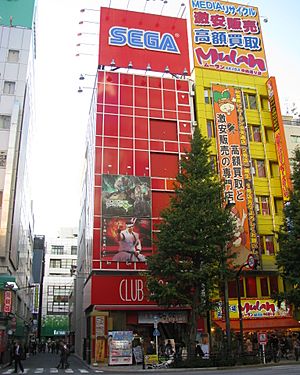
After Sega Group was formed in 2015, the original Sega Corporation was renamed Sega Games Co., Ltd. This part handled home video games. Sega Interactive Co., Ltd. handled Sega's arcade games. These two parts joined back together in 2020 and were renamed Sega Corporation. Sega Corporation now develops and publishes games for major video game consoles. It has said it is not interested in making consoles again.
Sega Fave Corporation, which Sega bought in 1991, makes toys for children's shows. These include Oshare Majo: Love and Berry, Mushiking: King of the Beetles, Lilpri, Bakugan, Jewelpet, Rilu Rilu Fairilu, Dinosaur King, and Hero Bank. Products sold in the West include the home planetarium Homestar and the robot dog iDog. The Homestar was first released in 2005 and has been improved many times. Sega Fave also makes and sells arcade games.
Since the late 1960s, Sega has been involved with bowling alleys and arcades through its Sega Entertainment Co., Ltd. company in Japan. In November 2020, Sega sold most of its shares in Sega Entertainment. Now, Sega's arcades in Japan are run by Genda Incorporated's Genda GiGO Entertainment. Sega's DartsLive company makes electronic darts games. Sega Logistics Service distributes and repairs arcade games.
In 2015, Sega and a Japanese advertising company formed a joint company called Stories LLC. This company creates entertainment for film and TV. Stories LLC has the rights to turn Sega games into movies and TV shows. They are working on shows based on games like Shinobi, Golden Axe, Virtua Fighter, The House of the Dead, and Crazy Taxi.
Game Development
Sega creates games using its own research and development teams. The Sonic the Hedgehog series, managed by Sega's Sonic Team, is one of the best-selling game series ever. Sega has also bought other game studios like Atlus, Play Heart, Creative Assembly, Hardlight, Sports Interactive, Two Point Studios, and Rovio Entertainment.
Sega's game development teams started with one group. As home video game consoles became popular, Sega added three more teams for consumer games. Arcade game development also grew to three teams. Later, Sega reorganized its teams into Sega Amusement Machine Research and Development Teams, or AM teams. There was often a friendly competition between the arcade and console game development teams.
In 2000, Sega reorganized its arcade and console development teams into nine smaller, independent studios. These included United Game Artists, Smilebit, Hitmaker, Sega Rosso, WOW Entertainment, Overworks, Amusement Vision, Sega-AM2, and Sonic Team. These studios were encouraged to try new ideas. In 2003, Sega started bringing these studios back into the main company.
Sega still has its own game studios as part of its research and development. Sonic Team is one of Sega's main development groups. Other teams work on games like Phantasy Star Online 2 and mobile games.
Sega's Impact
Sega is one of the world's most active arcade game makers. It has made over 500 games, 70 game series, and 20 arcade system boards since 1981. Guinness World Records has recognized Sega for this achievement.
The Sega Genesis is often considered one of the best consoles in history. It helped break Nintendo's strong hold on the market. It also helped create modern sports game series and made TV games popular in the UK. Sega was seen as innovative for making games for older players. Sega of America's marketing for the Genesis also influenced how later consoles were advertised.
Even though the Saturn didn't sell well, it is remembered for its great games. These include Burning Rangers, Guardian Heroes, Dragon Force, and Panzer Dragoon Saga. Some people have criticized Sega's management for how they handled the Saturn.
The Dreamcast is remembered for being ahead of its time. It had ideas that later became common in consoles, like motion controls and online gaming. Its end is linked to big changes in the video game industry. Some say the Dreamcast's end marked the decline of arcade gaming culture.
Some people have criticized Sega's decisions in the late 1990s. After the Sammy takeover, Sega made fewer games and worked with more Western studios. Its arcade operations also became much smaller. However, many agree that Sega was one of the most active and creative game developers ever. In 2015, Sega president Haruki Satomi said Sega had "betrayed" the trust of older fans and hoped to rebuild the Sega brand.
More About Sega
- List of Sega video game franchises
- Lists of Sega games
- Sega, S.A. SONIC
- Sega Technical Institute
See also
 In Spanish: Sega para niños
In Spanish: Sega para niños


